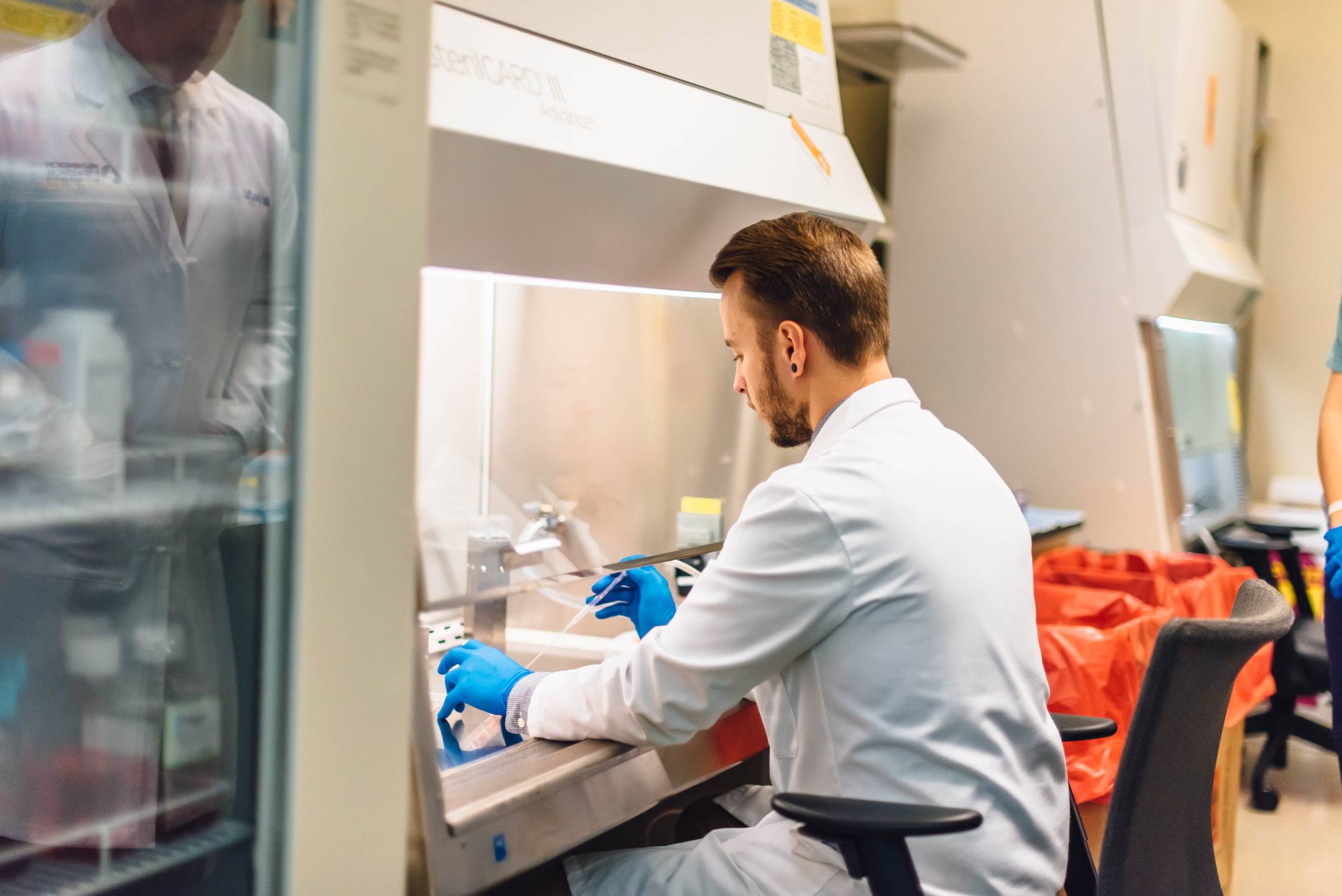Pennington Biomedical Researchers Looking for New Ways to Improve Life Span and Health During Aging
February 22, 2024 · Baton Rouge, LA
New findings show that life span can be increased by making cells less efficient at producing energy
The Pennington Biomedical Research Center is discovering new ways to improve life span and health during aging through its research.
A new study from Pennington Biomedical, “Restricting bioenergetic efficiency enhances longevity and mitochondrial redox capacity in Drosophila melanogaster,” published in the journal Aging Cell, showed that BAM15, a compound that makes mitochondria less efficient at producing energy, extended life span in fruit flies, and was associated with less body fat and increased muscle function.
A key focus of these studies was on limiting the ability of mitochondria to make energy. It is generally believed that maximizing the efficiency of mitochondria is favorable for health and lifespan across species. However, in today’s world of excess eating and reduced physical activity, reducing the efficiency of mitochondria may limit fat accumulation by burning calories in a futile cycle.
Research has shown that the life span of insects and mammals can be controlled through experimental manipulation of mitochondrial function, however, the specific role of bioenergetic efficiency to health and longevity has remained largely unknown. Pennington Biomedical researchers and others have previously demonstrated that restricting bioenergetic efficiency brings with it protection against obesity, Type 2 diabetes, cancer, and other chronic diseases by improving mitochondrial fitness and cellular function.
This current study is the first to show that adding BAM15 to the diet can uncouple mitochondria, extend life span, improve body composition, and protect against age-related decline in motor activity in a fruit fly model of aging.
The authors state, “In summary, our findings indicate that mitochondrial uncoupling by BAM15 confers life span extension, improves body composition, and protects against age-related decline in locomotor activity in Drosophila (fruit flies). Collectively, these data support an emerging role for restricting bioenergetic efficiency to maintain mitochondrial redox fitness across the life span.”
The authors note that further studies are required in humans to confirm these findings and address effectiveness for improving longevity.
“At Pennington Biomedical, we are unique in being able to conduct research in Basic Science, Clinical Research, and Population and Public Health all in one research center,” said Pennington Biomedical Executive Director John Kirwan, one of the authors on this study. “This type of research and these findings are a step toward finding new ways to improve a person’s life span and health as we age. At Pennington Biomedical, we are working on ‘solutions from cells to society,’ and the great news for everyone is that breakthrough research is taking place each and every day here at the center.”
Aging Cell is a flagship Geroscience journal publishing research addressing the biology of aging. With readership worldwide, Aging Cell is a journal of The Anatomical Society and John Wiley and Sons.
This research was supported in part by grants from the National Institutes of Health, including National Center for Complementary and Integrative Health, Grant/Award Number: T32AT004094; National Institute of General Medical Sciences, Grant/Award Number: GM104940 and GM138116; National Institute on Aging, Grant/Award Number: AG083239.
For more information contact:
Joe Coussan, Media Relations Manager, joe.coussan@pbrc.edu, 225-763-3049 or Ernie Ballard, Senior Director of Communications & Marketing, ernie.ballard@pbrc.edu, 225-263-2677.
About the Pennington Biomedical Research Center
The Pennington Biomedical Research Center is at the forefront of medical discovery as it relates to understanding the triggers of obesity, diabetes, cardiovascular disease, cancer and dementia. The Center conducts basic, clinical, and population research, and is a campus of the LSU System. The research enterprise at Pennington Biomedical includes over 530 employees within a network of 44 clinics and research laboratories, and 13 highly specialized core service facilities. Its scientists and physician/scientists are supported by research trainees, lab technicians, nurses, dietitians, and other support personnel. Pennington Biomedical is a state-of-the-art research facility on a 222-acre campus in Baton Rouge. For more information, see www.pbrc.edu.
Pennington Biomedical Research Center
6400 Perkins Road
Baton Rouge, LA 70808



